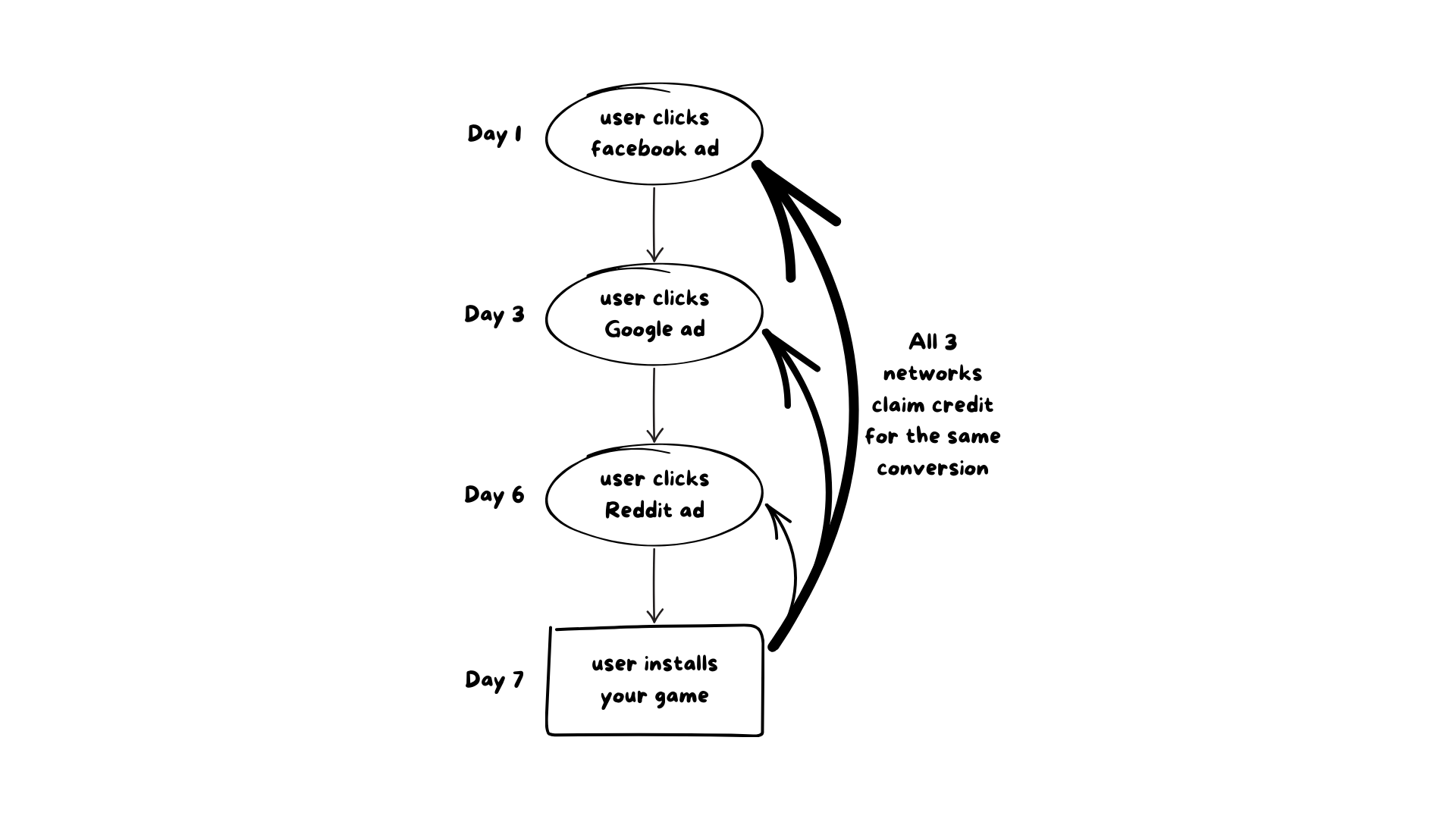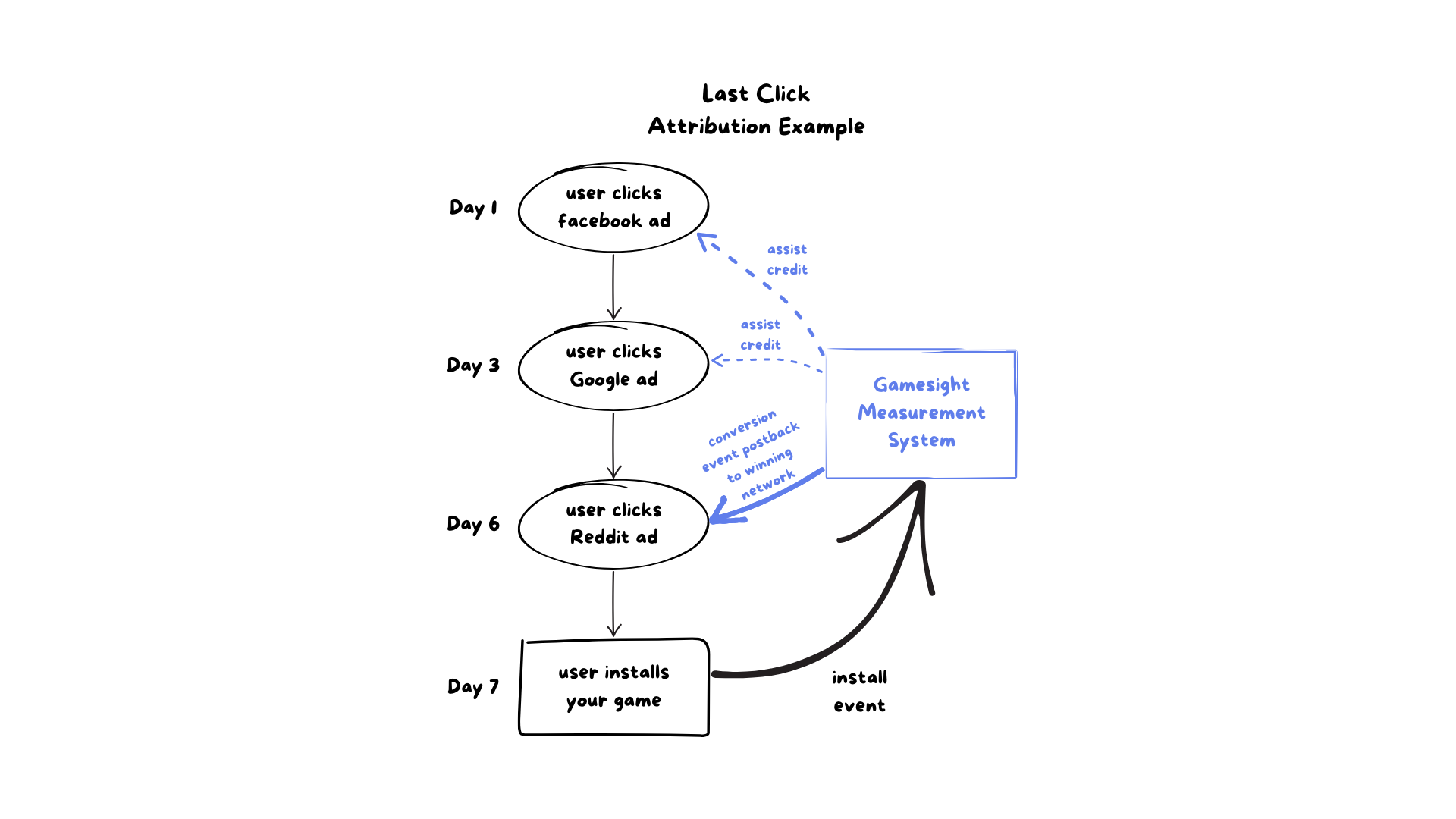Blind Bets and Broken Systems: How PC & Console Marketers are Playing a Rigged Game

Performance marketers in the gaming industry are largely subject to the whims and limitations of individual ad platforms. Some publishers are getting ahead by using a secret weapon.
PC and console publishers have long struggled to find and leverage actionable performance data for digital advertising ampaigns. The black-box nature of distribution platforms like Steam, Xbox, and PlayStation has traditionally left publishers with no reliable way to measure which marketing efforts are actually delivering the results they care about.
Some publishers with strong first-party relationships with their players through account systems and email newsletters have developed restricted solutions by working with ad platforms in a self-attributing capacity to recover small amounts of reporting on the performance of their campaigns. However, the cost of maintaining these integrations is high, and the reporting is severely limited. So, what’s the ultimate value marketers can garner from this type of measurement? Unfortunately, often much less than the effort publishers put in.
PC and console publishers have been getting the short end of the stick for too long. By understanding the limitations of working directly with ad platforms in a self-attributing capacity and ultimately taking control of better measurement solutions, marketing teams can leverage their first-party relationship with players using tools they own to get the insights they deserve from their media spend – all at a significantly reduced operational cost.
What is a Self-Attributing Platform?
Many ad platforms have the capability to process conversion data from advertisers to optimize campaigns. This has long been available for events occurring on websites or in mobile apps, but increasingly platforms are rolling out support for "offline conversions" as well. Offline conversions are especially useful for events that occur outside the reach of a standard pixel – installs, and in-game purchases are perfect examples of these types of events. These actions aren’t happening on your website that you can measure with your Meta pixel; they’re happening on separate platforms (Xbox, PlayStation, Steam, etc.) that are inaccessible by ad network measurement tools.
Ad platforms, like Meta, Google, and others, will try to attribute these “offline conversions” and tell you how many installs or purchases they were responsible for driving. This is what it means to work with a ad platform in a “self-attributing” capacity – they are measuring themselves directly. To make this machine go, you have to move the conversion data from your game to the ad platforms (often via bespoke Conversion APIs) for analysis.
This is often the crux of the problem for many advertisers in gaming. How do I, as a game marketer, move conversion data from a game to an ad platform somewhere else? What information do I need to provide to make this thing even work? Do I even have the required data? Is the answer to that question true across all of my players or only some? Is the data I’m going to get back worth all this effort?
Sampling Bias, Audience Constraints, and Other Horrors
A major limiting factor to this whole system is the data point(s) required for the ad platform to match against. For our industry, this value is almost always the email address (Facebook, Google, and others will ask for phone numbers, first & last names, mailing addresses, and more details, but this information simply isn’t used or generally available within gaming). Typically, email address collection is a limited practice across gaming advertisers. Most aren’t collecting them, and publishers that are engaging with users in this way still have poor email coverage as a proportion of their total player base.
The problem gets worse when you consider when and how emails are collected from players. The two common entry points for this process are:
- Website interactions
- In-game interactions
Through account registrations and login events on these platforms, advertisers can build up their 1st party data (for many useful purposes beyond attribution, by the way) and begin sending these conversion signals back to advertisers. The elephant in the room? These flows are almost always optional and aren’t guaranteed to give you the necessary signal at the time of conversion to provide to the ad platform for analysis.
Take an example user who learns of your game from a video campaign you’re running. They see the ad, check out the game on their console, and install it. They’re greeted with a login/register prompt and skip this optional step. Because you didn’t have email at the time of conversion, you don’t have any matching information to send to your ad partners and ultimately lose the opportunity to attribute this conversion.
This problem gets more complex when considering consent frameworks. It’s common to have consent options both for 1st party data collection and 3rd party data-sharing. You can imagine a situation where a user consents to 1st party data collection but refuses to allow their data to be shared with ad networks. There’s no way you’d be able to send this data back to an ad platform for optimization. However, with better measurement tools, you might have been able to attribute this user back to the campaign they interacted with. Instead, by solely relying on the ad networks, any chance for actionable marketing data on this user is gone due to a lack of 3rd party data-sharing consent.
These are players enjoying your game, making in-game purchases, and other great things you’d probably love to learn from and optimize for, but the signal is largely lost. Your effective signal is your hundreds of thousands or millions of monthly active users triggering conversions multiplied by the percentage of players you have emails for at the time of conversion and consent to you sharing this data with external ad partners – you can begin to see the scale of the problem. The percentage of players for whom a publisher has emails, whether it’s 5% or 45%, is the best-case scenario for the volume of users for which you can send conversion data. The effective number is often much less.
Are these users a representative sample of your average user? How does their behavior differ from users for whom you don’t have emails? What marketing strategies are most effective for these different user bases, and which are more valuable? As a marketer, you’re placing hefty bets in the form of multi-million-dollar marketing budgets with limited ability to verify these hypotheses by relying on ad platforms alone. Inevitably, the signals that advertisers can leverage are a modicum of what’s really possible. The conversions that publishers can send back to the ad platforms are a subset of a subset of a subset of real users, and marketers–not the platforms–end up paying the price for less-than-optimal conversion data.
Mixed Messages
When advertisers rely on ad platforms to tell them how many conversions they are responsible for, the picture they get back from their ad partners is strongly biased and incomplete. When we speak with marketers, they’re often surprised to learn that many of the conversions in ad network 1’s reporting include conversions that are likely also being claimed in ad network 2’s reports, and so on.
Why does this happen? These platforms only see their own clicks and impressions – they don’t see what’s happening on other channels you are marketing against and have no incentive to work together to do so. Ultimately, all your network-reported conversions are scoped to the perspective of, ‘Did we ever show an ad to this user within the attribution window?’ – full stop.

This is bad news for anyone who wants to calculate the ROAS of a marketing campaign when you may be counting a single conversion multiple times. Most marketers agree on some form of credit allocation that would say some of these interactions are worth more than others (and some might be worth nothing at all), but this level of insight isn’t possible with self-attributed measurement, leaving marketers with unclear answers on which channels, campaigns, and individual ads they should be optimizing toward.
Whose Data is it Anyway?
Player data is one of the most sensitive pieces of information a publisher possesses. Even publishers with solid identity coverage across their player base often aren’t in love with the idea of sending all of their player data to an ad platform. Sharing this data with 3rd parties, like ad networks, can be problematic (and a complete non-starter for many organizations). Those who can justify and secure permission to send user data to a major ad platform will be greeted with realization that this data-sharing agreement is a one-way street. Ad platforms will happily accept any user data advertisers are willing to share and promptly repay you with… aggregate reporting. Many platforms won’t even provide aggregates until the reporting passes a particular threshold, like the number of conversions or distinct users.
What gives? There’s some historical context here, but ad platforms are incredibly sensitive about their audiences–and for good reason. A big part of why these platforms are some of the largest market cap publicly traded companies in the world is because of the audience they cultivate. Anything that could risk third-parties replicating those audiences is a non-starter. So, for business and privacy reasons, their solution is “always aggregate, all the time,” regardless of the compromises you might have made to get this data in their hands. Such is the price to pay to play this game.
What this means for advertisers is that even if you were getting perfect attribution answers back from these platforms (it shouldn’t be a surprise by this point that you aren’t), the granularity of information if severely limited – you’re getting no insights at the user level. This means that so much of the work to develop that 1st party relationship with your player isn’t able to be used to act on some of the most critical insights like:
- Where are my highest-value players coming from?
- What kinds of messaging speak best to certain players?
- How can I optimally reengage lapsed players with personalized marketing?
We believe that your data is your data. Publishers should be able to leverage insights from their marketing to deliver better player experiences with user-level reporting for high-resolution player insights, CRM enrichment, and long-term behavioral analysis.
The Silent Killer: Operational Costs
Many marketers understand that this data has to move from one place to another. Conceptually, that makes sense, and someone has to do that work, but once that’s done, we’re good, right? If things are feeling a bit too cozy around here, I’m about to tell you that there’s a second elephant in this room.
Unfortunately, things are not that simple. These ad platforms are regularly updating and deprecating their Conversions APIs on a monthly or quarterly–not yearly–basis. There are many reasons for this that are not within the scope of this article, but what matters is that you’ve just introduced a developmental and maintenance item for your dev team. These pipes will break; it’s just a matter of when, and often a company’s most precious (see also: expensive) resource, engineering time, is what’s required to keep the data flowing. So, if you thought marketing wasn’t a big enough job, now you’re a product manager, too.
For marketers with access to engineering resources, it’s often a regular struggle to request the resources they need to keep these integrations alive. We’ve seen publishers integrate these pipelines firsthand only to give up because, eventually, the internal operational cost and resource drain can’t be justified anymore. Back to the Wild West.
So, what are Game Marketers to do?
By this point, things are looking pretty bleak. Marketers often feel that while they’re on the wrong end of this deal, it’s still better than nothing, which is true. If you’re only working with one or two networks, don’t have an interest in user-level insights, and are primarily optimizing around web conversions, working with ad platforms directly and even using their measurement tools is an effective solution. However, most marketers we speak to need to measure the performance of their marketing efforts on in-game conversions in an actionable way that enables them to grow their 1st party relationships with their players and make smarter decisions about where they spend their media dollars.
The measurement solutions we provide our customers empower marketers to do what they do best – make great campaigns, connect with potential players, and grow loyal communities – by providing the best attribution possible. We solve the self-attributing network problem by acting as a neutral arbiter between your ads and conversions. Our attribution product shows you this entire user journey and appropriately applies credit according to your preferred attribution model, enabling you better to understand the impact of your advertising throughout the funnel.

Gamesight isn’t limited to a very specific email-based user flow for measurement either. User flows vary immensely, so you should have methods of measurement to match, including, IP-based matching, device graphing, and you can leverage your 1st party relationships with your players by using emails for matching, too. Our robust approach to measurement fills in the gaps that aren’t captured by the data and user flows that the ad platforms’ self-attributing methods are limited to.
But that doesn't mean you have to leave the insights from self-attribution platforms aside. Our customers get the additional benefit of postback support. We build and maintain conversion pipelines across all major ad platforms. Integrate with Gamesight once and you have all automatic data flows for all major self-attributing platforms as well. This enables your team to focus on higher-priority tasks and enables you to focus on running your campaigns as efficiently as possible.
The bottom line is that solely relying on the ad networks to provide you with conversion data is playing the game with one hand tied behind your back. 2023 was one of the biggest years ever for gaming. High-quality games seemed to be released every week, and it was more challenging than ever for individual projects to stand out. Whether 2024 can match the previous year’s results remains to be seen, but the industry is growing and will stay competitive. Marketers must have a comprehensive strategy for measuring their marketing efforts in a way that’s effective and actionable because this game is won by playing smarter, not harder.

